|
Life
At the Border
These modern times of newsfeeds to your smart phone, 24 / 7 TV
reporting and commentary plus all the opinions one can stand - we
certainly appear to be a well informed society. Going back only a
few decades, however, the print media, newspapers and magazines were
the key players in keeping America up to date and one of the most
widely circulated outlets was the weekly then monthly news and
popular culture magazine - Life.
Featuring a solid staff of writers, guest writers and some of the
best news photographers of the day, the large format, glossy
magazine covered the nation and the world, everything from the
latest dance fads of the 1930s through World War II, fashion,
culture, entertainment and hard news. If it happened, funny or
tragic, trivial or significant, chances were good that Life had a
writer and photographer on alert. The magazine was, before
television and nationally syndicated radio, one of the very few mass
culture windows to the United States that could be read on the same
day in Atlanta, Anchorage and Altoona.
This Wiki provides a concise history of the magazine.
In 1978, as circulation began to fall due to the pressures of TV
based news reporting plus changing demands of the public, Life
reformatted to a monthly edition and the longer time lines allowed
for greater depth and scope in story telling. A great example of
the new format was a story in the August 1981 edition that featured
a tour along the complete Iron Curtain of Europe. The text was by
Judy Fayard, a rising star in the magazine reporting world with
beautiful images by renown photographer, Harald Sund.
| |
Click on the thumbnail |
|
| |
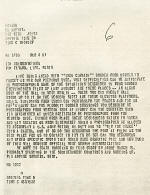 |
|
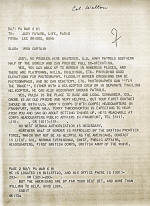 |
|
| |
Some of the military message traffic from the planning of the border
story saved by Life photographer Harald Sund. |
|
|
|
The cover of that edition featured a young woman in a
bathing suit rising from a swimming hole - after all, they
were trying to sell magazines, but the feature story was the
border tour and while on this long photo safari, Harald Sund
captured images of both the 1st Squadron border area and
Eaglehorse troopers on border patrol. The story was
titled: The Forbidden Line and Mr. Sund provides this
recollection.
+++++
As a freelance photographer who had previously photographed several
stories for LIFE Magazine and for many other publications, I was
asked to do the photography for a story on the Iron Curtain which
existed at that time. The plan was to start in southeast Turkey in
view of Mount Ararat and end in Kirkenes in northern Norway.
This trip lasted almost two months beginning with my arrival
in Paris on March 21st and ended back in Paris on May 18th,
1981. This story required months of planning and logistics
for ground transportation (train, car, boat), embassy
visits, meetings, foreign and US military guides, visas,
hotels, local contacts, research, film processing along the
way, baggage, flights, food and money exchange. Vast amounts
of communications took place (before and during the trip)
for permissions to access restricted areas in Turkey,
Greece, Yugoslavia, Austria, West Germany, West Berlin,
Finland and Norway.
From these vantage points, myself and LIFE Paris based writer, Judy
Fayard, we were able to look across and into the land and life along
this extensive and sometimes hidden border. In the end, this was the
longest story LIFE had ever published up to that date.
| |
Click on the thumbnail |
|
| |
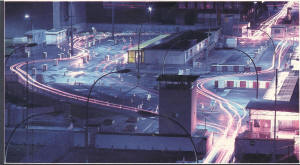 |
|
 |
|
| |
The story featured over seventeen pages of Mr. Sund’s photographs,
many rendered in the huge double page style that only Life could
accommodate. Seen here - Check Point Charlie in Berlin. |
|
Another scene from the barrier system in Berlin. |
|
Our coverage along the way eventually landed us the night of
April 17th in Fulda, home of the 11th ARC HQ and 1st
Squadron. Our overall purpose for being there is best
described by communications between Ms. Fayard and Lee
Griggs in Bonn (copies attached herewith) in which he
mentioned local commander, Col. Crowe as “an old friend and
very helpful” toward our mission. Of course, this turned
out to be true. We stayed in the area until the morning of
April 22nd and my log shows very brief “reminder”
descriptions of our general activities during that time:
April 17th arrive Fulda to Hotel Zum Kurfursten
April 18th Aerials of East and West Germany via helicopter. Ground
views of Setzelbach area. Sunset image of church Rasdorf. Army
meal Camp Lee.
April 19th Ground patrol. Dusk images of house and border. Army
lunch meal.
April 20th Views of area around Rasdorf, Setzelbach
April 21st Views around Rasdorf fence 2 guards and motorcycle.
Philippsthal and East German city.
April 22nd Depart Fulda
During our stay with the 11th Armored Cavalry our contact and guide
was Staff Sgt. Bob McCord who, with Ms. Fayard, arranged for the
helicopter to “fly the trace” and took care of all other logistics
associated with our coverage including my attachment with a
dismounted patrol physically walking the border trace during the
late afternoon and evening of April 19th.
It was a most interesting experience for me personally as I
had previously served three years in the United States Army,
almost two of which were in Wurzburg, Germany. Although we
did not patrol the border at that time, we did indeed go out
on many one to two week field trips and exercises.
If my memory serves me, we were driven to the patrol area of the
Second Squadron across from the East German town of Frankenheim.
This was directly along the border where I met SGT Jon Moore, SSG
Kenneth Binkley and PFC Matlock, Troop G, Second Squadron, 11 ACR
(see
attached photo from LIFE) was both familiar and nostalgic to me and
I greatly appreciated how they went about their business in such a
professional manner. I do not recall Ms. Fayard being with us - I
guess it was just us men.
| |
Click on the thumbnail |
|
| |
 |
|
| |
This page from the article is most appropriate to the Eaglehorse
portion of the story. Judy Fayard’s text, Harald’s images. |
|
The late afternoon or evening was dry, no wind, not to cold
and very quiet. The landscape was forested and rather flat
with occasional openings with views on to the border. Only a
few yards away and separated by an “Iron Curtain” was a
different world and of a different life than what we knew.
During the patrol, I remember approaching a watch tower just
across the border and was amazed they were able to determine
if it was occupied by using a heat detection device
(official Army name unknown to me).
I do remember their being patient with me as I tried not to
interfere with their patrol duties and also trying to photograph
under low light conditions while maintaining our camouflage and
cover. We tried to maintain our discreteness and I wondered if
anyone on “the other side” was doing the same. Each hidden from each
other. I was looking for just a few images, perhaps even one, that
would convey what it was like to be with the Army directly on the
border between East and West.
Impressed upon me was their important duty and serious
business for sure. The remaining time spent was quietly
walking and at times conversing with them eventually
stopping for a quick flash portrait. For a few hours it felt
comfortable and good to be back in the Army again. We
neither detected nor encountered any East German soldiers
along the way.
| |
Click on the thumbnail |
|
| |
 |
|
 |
|
| |
From the day Harald accompanied the dismounted US Patrol, this image
of East German border troops in the vicinity of Setzelbach -
technically the 1/11 ACR portion of the border. |
|
A rough and ready map to re familiarize you with the border area.
1 - OP Alpha
2 - Setzelbach Pocket
3 - Fulda
4 - Northwestern end of 2/11 ACR patrol responsibility, Frankenheim
peninsula. |
|
After all these years I still think of Staff Sgt. McCord as he
openly and proudly shared with me how grateful he was to the United
States Army for providing him direction and discipline in his young
life at that time and he had special admiration for and loyalty to
Col. Crowe. I fully understood his comments as I too am very
grateful to the Army for the three most important years of my life
without which I am not sure who I would have become.
To this day in my office proudly hangs the certificate I
received from the 11th Armored Cavalry dated 21st of April,
1981 and signed by Col. Crowe proclaiming me “An Honorary
Member of the Border Legion”. It was, is and always will be
special to me and I continue to have great memories and
appreciation for the Cavalry Soldier.
| |
Click on the thumbnail |
|
| |
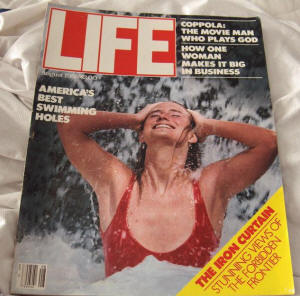 |
|
| |
Hey - we’re selling magazines here! Get a girl in a bathing suit on
the cover! Life August 1981 - the Iron Curtain story was their
largest endeavor to date. |
|
+++++
So the border is gone and Life magazine is almost gone but what
about those names and faces? Judy Fayard is consuming French
culture and writing about it at a hectic pace in Paris. Harald Sund
is still on assignment as a renown photographer now based in the
northwest and those three troopers - SSG Albers, SGT Moore and PFC
Matlcock - Troop G 2/11 ACR - well if you are in contact with any of
them, we would surely like to add their recollections.
| |
 |
|
| |
Close up of the three Eaglehorse troopers, SGT Jon Moore, SSG Albers
and PFC Matlock, Troop G, with original caption. |
|
The Life article featured only the one photograph of
American soldiers and although un named in the caption - as
long as August 1981 edition sits in archives, is bought and
sold on E Bay or hangs around in your parents attic - those
three troopers will be the most famous unknown soldiers in
Germany that year.
| |
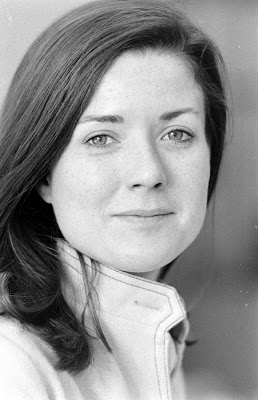 |
|
| |
Writer Judy Fayard at about the time the article went to print. |
|
Great thanks to Harald Sund for his wonderful recollection
of the border tour so many years ago.
| |
Click on the thumbnail |
|
| |
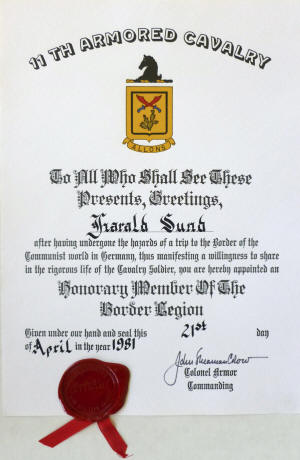 |
|
| |
Harald Sund’s Border Certificate - signed by Colonel JS Crowe. |
|
May 2014 |